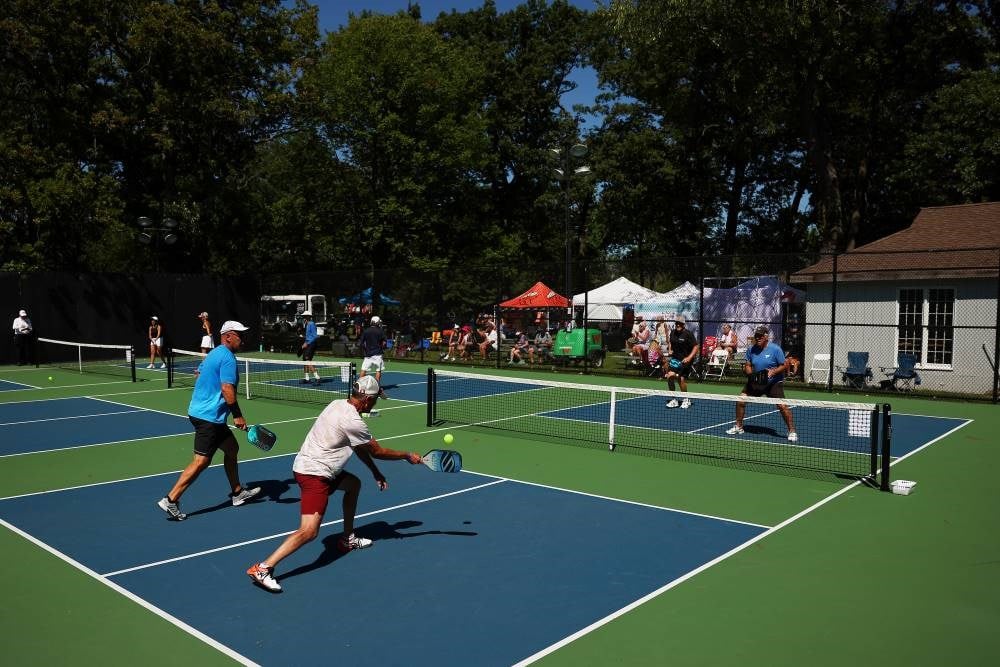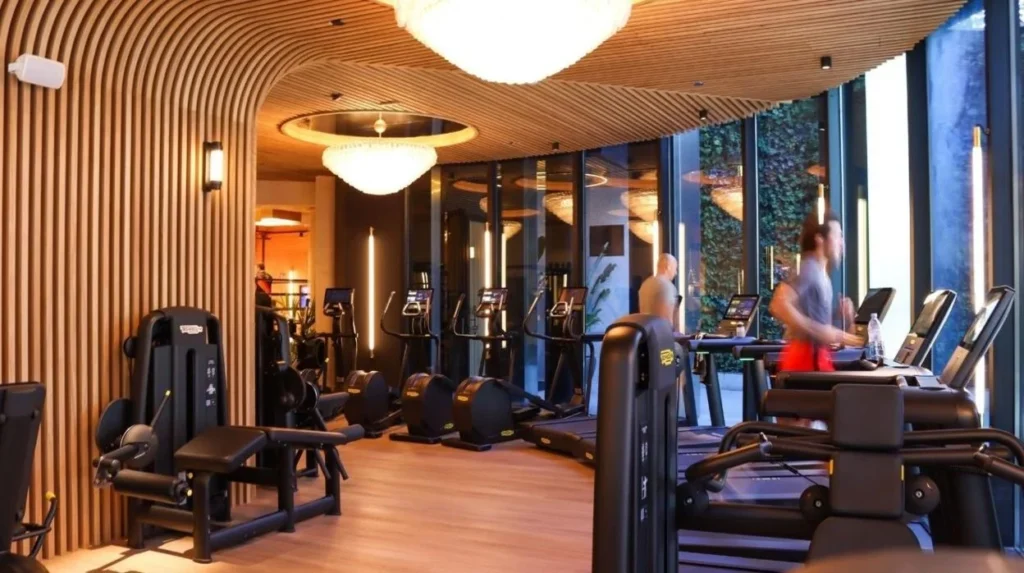The Global Report 2025 of the HFAwhich analysed almost 30 markets, shows that around the world more people are joining gyms and considering fitness as essential, despite the rising cost of living.
After weathering economic slowdowns and a global pandemic, the fitness industry is gaining a reputation as a long-term investment target, especially since club offerings have expanded into mental wellness, recovery and longevity. 91 % of respondents anticipate growth in 2025 and 51.3 % foresee an increase in memberships.
Presenting this year's annual flagship report, the CEO and President of the Health & Fitness Association, Liz Clark, said: "In 2024, many countries reported record highs in installations, membership and penetration.. Operators continued to invest in innovation - from AI and wearable devices to recovery services and strength-focused design. Public discussions on obesity, mental health and prevention increasingly included the role of fitness.

Key trends
- Large growth opportunities remain in emerging markets where penetration is less than 1 %, such as India, while developed markets are approaching or exceeding 20 %.
- Hybrid models have become the industry standard.
- Millennials and Generation Z are driving growth, while higher income segments dominate membership and generate premium opportunities.
- More focus needs to be put on the retentionwith improved welcoming strategies and commitmentin order to keep the 50 % of new members cancelling in the first six months.
- The corporate welfare is a great opportunity and medical integration opens up possibilities for partnership with the health system.
- Consumers show a preference for personalisation.
- The preventive health strategies promoted by many governments represent an opportunity to elevate the fitness industry and capitalise on the message.
- There is a moving away from the habits of pandemics (outdoor exercise and home fitness) facilities, with a renewed appreciation of the community.
- The searches reflect a growing interest in the longevity and healthspan (healthy life years), rather than aesthetics, with a focus on fitness as medicine. Recovery and wellness services - such as cryotherapy and red light therapy - are becoming minimum expectations of members.
- The the rise of strength training has led to modern clubs allocating 42 % of space to this area, as opposed to 20 % in traditional designs, while the cardio space decreased from 34 % to 12 %.
- Pickleball is the fastest-growing sport in the world, with a increase of 223,5 % in the US in three years. Life Time expects to reach 1,000 courts by the end of 2025.
- Technology integration is another strong trend, with increasing use of AI for operational efficiency and personalised experiences. However, 47 % of consumers report inaccurate or irrelevant data in AI-enabled fitness apps, raising questions about their reliability.
- The industry is becoming increasingly attractive to investors private equity. Notable financing rounds were 17.2 million from US$ for Myzone and 165 million for Therabody. Planet Fitness raised 800 million through securitised financing and Equinox raised some 1.8 billion in new equity.
- Investment is driven by strong results from companies such as Planet Fitness and Life Time; the trend towards longevity and healthspan; and the post-COVID wellness boom, particularly among younger consumers.

With regard to sporting activities, these are the trends.
What goes up:
→ The Pilates has grown by nearly 40 % since 2019, leading the trend as consumers prioritise low-impact, core-focused workouts.
→ The yoga practice increased by more than 20 %, consolidating its role as an accessible and essential discipline for body and mind.
→ The kettlebell training rose by more than 20 %, signalling a growing demand for functional strength routines.
→ The use of free weights (dumbbells and barbells) maintains steady growth, confirming that strength training is already a pillar of longevity.
What goes down:
→ The indoor cycling in groups suffered the largest drop, with a 33.5 % decline in share.
→ The cardio machines (treadmills, elliptical trainers, bikes) show double-digit declines, with users abandoning repetitive and uninspiring modes.
→ Formats such as bootcamp, HIIT and cross-training The extreme intensity and "mix and match" routines give way to specific, goal-oriented and longevity-oriented workouts.
The era dominated by cardio and bootcamps is giving way to strength, mobility and sustainable performance. Consumers choose formats that prioritise long-term healthnot just sweat and stiffness.
Challenges: inflationary pressures affecting disposable income; rising interest, construction and labour costs; supply problems and labour shortages. In the US, tariffs also create uncertainty.
By figures
- Top 10 by revenueLife Time (2,621 M US$); Basic-Fit (1,315 M); Planet Fitness (1,200 M); RIZAP Group (1,130 M); David Lloyd Leisure (1,084 M); SmartFit (1,035 M); PureGym (773 M); RSG Group (482 M); SATS Group (471 M); Fitness Park Group (460 M).
- Increased number of installationsPurpose Brands (7,084); Xponential Fitness (3,187); Planet Fitness (2,722); Curves Holdings (1,984); HILEFIT (1,800); RIZAP (1,782); Smart Fit (1,743); ZhongTian (1,593); Basic-Fit (1,575); F45 (1,500+). PureGym, the UK's largest, ranks 13th with 680.
- Main franchisesAnytime Fitness, Planet Fitness, Curves (Japan), F45 Training, Orangetheory Fitness.
- More partnersPlanet Fitness (19.7 M); HILEFIT (14 M); Purpose Brands (5.7 M); Smart Fit (4.8 M); Basic-Fit (4.3 M).

Europe
Europe combines mature and emerging markets, reflecting stability and opportunity. Mature markets (UK, Switzerland, Germany, Austria and Spain) recorded gains in 2024. 90 % of European companies expect to grow by 2025 and half plan to expand.
- United KingdomThe penetration rate is the highest in central Europe (16.9 1Q103Q3). Despite inflation and the impact on discretionary spending, all indicators are growing. With the new Labour government (2024), focused on public health and economic growth, the industry is looking for a key role.
- Austria surpassed Germany with 13.9 % penetration, thanks to growth in the under 30s and over 50s. Personalisation, digitisation, yoga and strength training with free weights are on the rise.
- Germany reached 13.8 % (+0.2). Despite cost of living pressures, consumers prioritise their well-being. DSSV launched a "Quality Offensive" to strengthen the sector as a legitimate contributor to public health.
- France exceeded 10 % of penetration, driven by those under 30, mostly women. The over-60s account for only 6 % and have a 40 % cancellation rate.
- Spain reached record highs: +8.8 % in partners and penetration of 13 %. It is already one of Europe's leading markets, with opportunities for operators and investors. VivaGym and Synergym expanded record, Metropolitan and David Lloyd entered Valencia, Seville and Bilbao, and boutique studios expanded into medium-sized cities.
Asia-Pacific
- AustraliaPenetration of 23 %, with 48 % over 15 years old active at least 3 times a week. Strong growth of strength training in the elderly.
- New Zealandpenetration of 21 %, albeit with economic difficulties (high inflation and low growth). The sector adapted with leaner operations and segmented offerings. Inequalities persist in Maori, peaceful and rural communities.
- ChinaThe ageing population opens up opportunities in fitness for seniors. The ageing population opens up opportunities in fitness for seniors.
- Indiapenetration of 0.8 %, but with strong growth. The government boosts fitness culture with its Fit India Movement. Luxury and boutiques are the fastest growing.
- JapanThe rise of pilates and 24h self-service gyms. Mergers, acquisitions and new conceptual formats are expected.
Latin America
Market with great untapped potential. The industry is fragmented and many facilities still charge cash. Smart Fit leads with 4.8 M members in 15 countries and will open its first club outside the region (Morocco).
Growth is underpinned by growing health awareness and a willingness to invest in wellness, despite economic constraints. To thrive, gyms will need to embrace technology and improve the member and employee experience.
Middle East
The region shows great potential thanks to favourable economic conditions, government support and growing interest in wellness. Although it has some of the highest inactivity rates in the world, demand for fitness is increasing, particularly in Saudi Arabia and the UAE.
- Main operators: Leejam/Fitness Time, Holmes Place, Kun Sports, Saudi Sports Club, Gymnation, Armah Sports, Trifit.
- UK and US operators are also entering: 9Round, F45, UFC Gyms, Fitness First, World Gym, Powerhouse, Gold's Gym, Purpose Brands, Xponential Fitness.
- Competition is growing in Saudi Arabia, with demand for strength training and pilates.
- In the Emirates, popularity of biohacking, functional medicine and personalised services, driven by expatriates.
North America
The market continued to expand in 2024:
- USA. USA.penetration rate: world-leading penetration rate of 24.9 %.
- Canada: 15,5 %.
Both with strong infrastructure and room for growth (30 % of inactives according to WHO).
The HVLP gyms The boutique and premium studios are leading the way, while boutique and premium studios are growing in terms of personalisation and community.
In Canada, the Fitness Industry Council prioritises for 2025: incentivising fitness through policy, breaking down cost barriers and positioning the industry as a partner in chronic diseases.
In the US, the initiative Make America Health Again Trump's new economic stimulus package elevates physical activity and wellbeing as national priorities. However, tariffs can affect economic confidence.
Digital subscriptions fall as consumers return to physical gyms; demand for recovery technology grows and AI is adopted for efficiency and personalisation.
Predictions
- The momentum of the models will continue high value best price around the world.
- Community building will be key to retention.
- AI integration will continue to expand.
- Welfare and longevity services will be consolidated.
- International expansion will target low penetration markets such as India, Japan and Saudi Arabia.
Success will depend on balancing traditional fitness offerings with expanded wellness services; integrating technology without losing human connection; and designing scalable models that adapt to regional differences.






